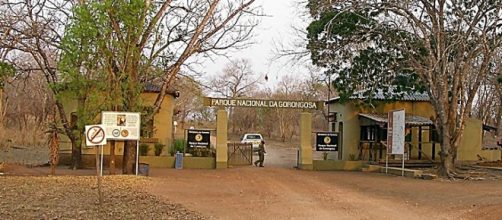Reports from Mozambique indicate that opposition group RENAMO is escalating their armed conflict against the ruling party of FRELIMO. The threat of a renewed civil war has the potential to re-devastate wildlife and wilderness reserves. A year after the country was declared landmine free, thousands of Mozambicans are fleeing to neighboring Malawi. People have been shot on main transport routes from roadside ambush.
16-years of civil war almost wiped out wildlife
The country was devastated by a 16-year civil war that ended in 1992. The war saw more than a million dead from conflict and starvation, over 5 million displaced people and thousands of landmine amputees.
The war almost wiped out the wildlife of the country. After democratic elections, support for the opposition, RENAMO waned as the war-exhausted people tried to put their lives back together again, but it was a short-lived peace. In 2012, RENAMO leader Afonso Dhlakama called for a new “political order” and began to retrain the rebel veterans of the civil war. By 2015, RENAMO had threatened to take certain provinces back by armed force unless they were granted autonomy
2016: Growing threats and shots fired
Violence has flared on and off since 2013, but recent attention has now focused on a series of attacks that have left civilians and policemen dead. The BBC reported earlier this month that tension between the two factions is a “growing concern.” Since this report, violence has increased.
The Sofala province saw a spate of killings along the main routes last week. The Maputo Daily reported that there were three attacks in two consecutive days in this province that was one of the most strongly contested areas during the civil war.
Gorongosa National Park in Sofala
Sofala is the home of the nearly 5000 sq.km Gorongosa National Park.
The civil war made administration of the park impossible and it was finally abandoned in 1983. The infrastructure was destroyed through bombing and bitter fighting. Both armies involved in the conflict massacred elephants to exchange ivory for weapons. Starving troops and displaced civilians destroyed the remaining wildlife to feed themselves.
By 1992, mammal populations had fallen by 95%.
The Gorongosa Restoration Project
The Gorongosa Restoration Project (GRP), a USA non-profit organization, in joint collaboration with the government of Mozambique began operations in 2008. American philanthropist Greg Carr was the driving force behind the concept. They have an agreement to co-manage the park and to work toward other long-term goals such as the creation of a “sustainable tourism industry.” Since the inception of the agreement, the government and many other partners (including USAID) have worked together so well, it has been hailed as one of the world’s most ambitious efforts to restore a wildlife area. The project has been an outstanding example of what can be achieved between public and private organizations.
War is the greatest threat to biodiversity
The threat of a renewed civil war is a threat to the future of Gorongosa. In an interview with Nautilus in 2015, Gregg Carr at that time acknowledged that there were tensions and that RENAMO was carrying out some road blocking to prove their point. However, at that time, the indiscriminate shooting of people along the road which happened last week was not a consideration. Carr went on to say that “war is a tremendous risk to biodiversity.” When there is war, there is a breakdown in law and order which prevents efforts to protect and develop natural resources.

